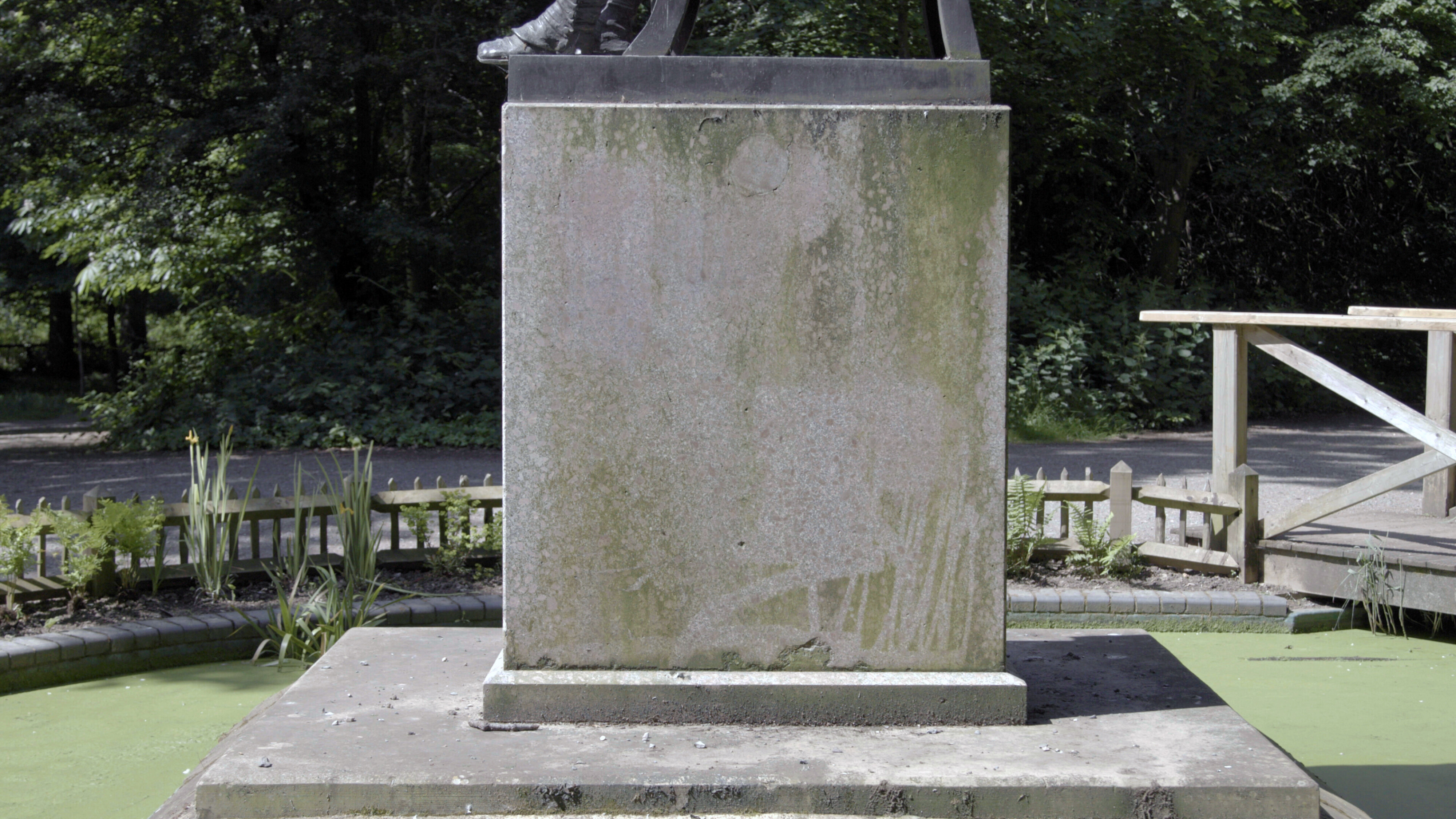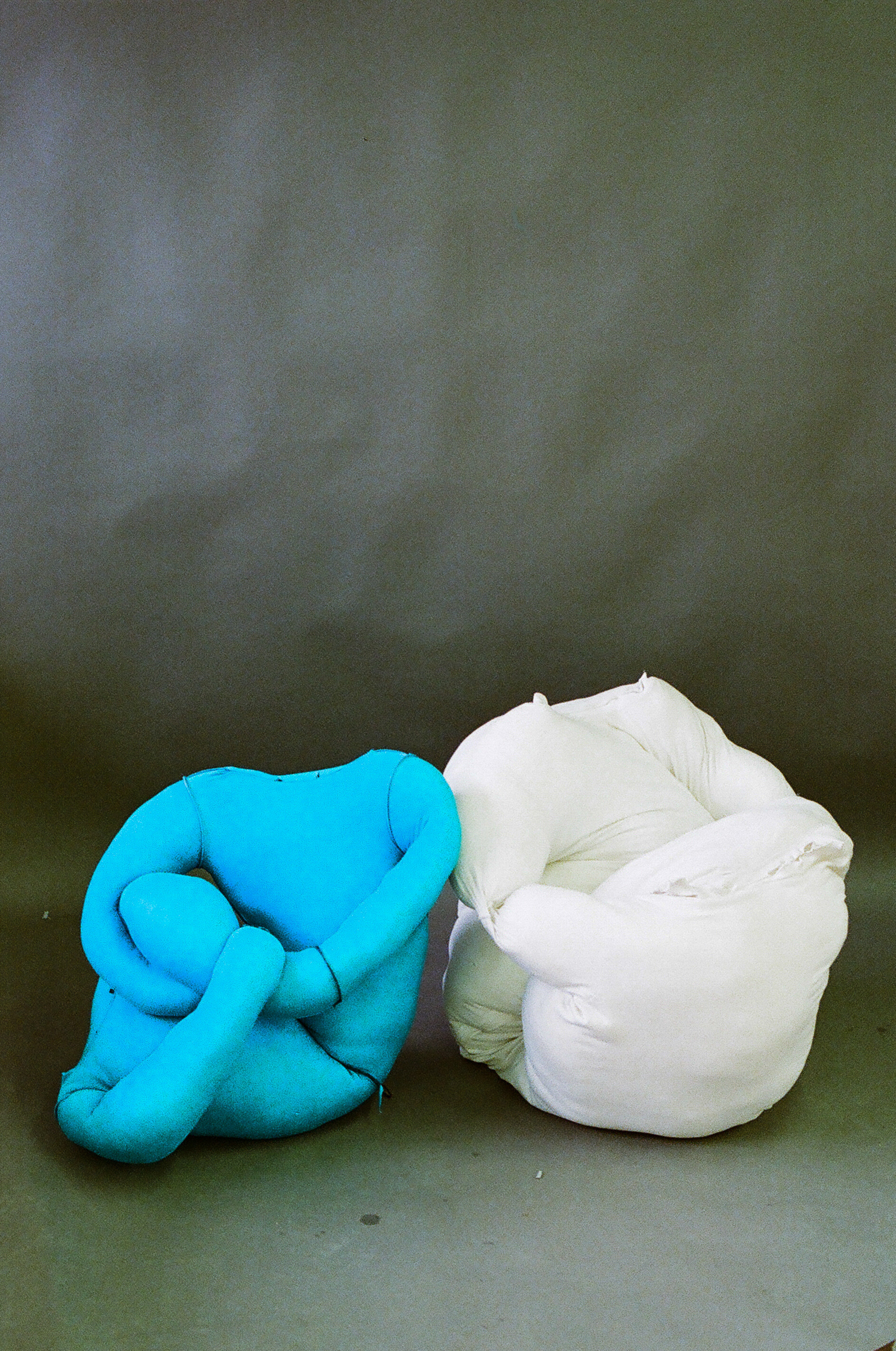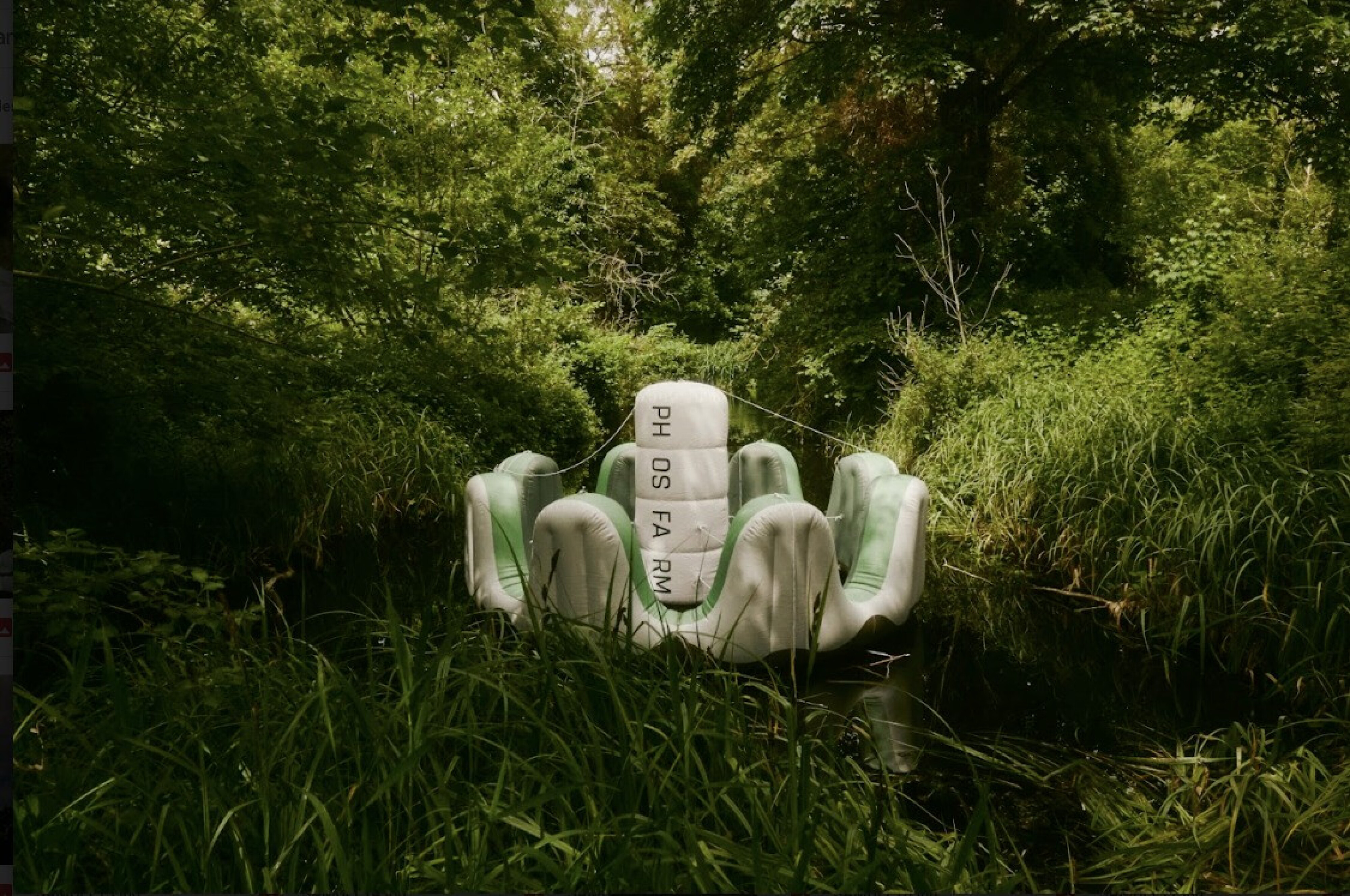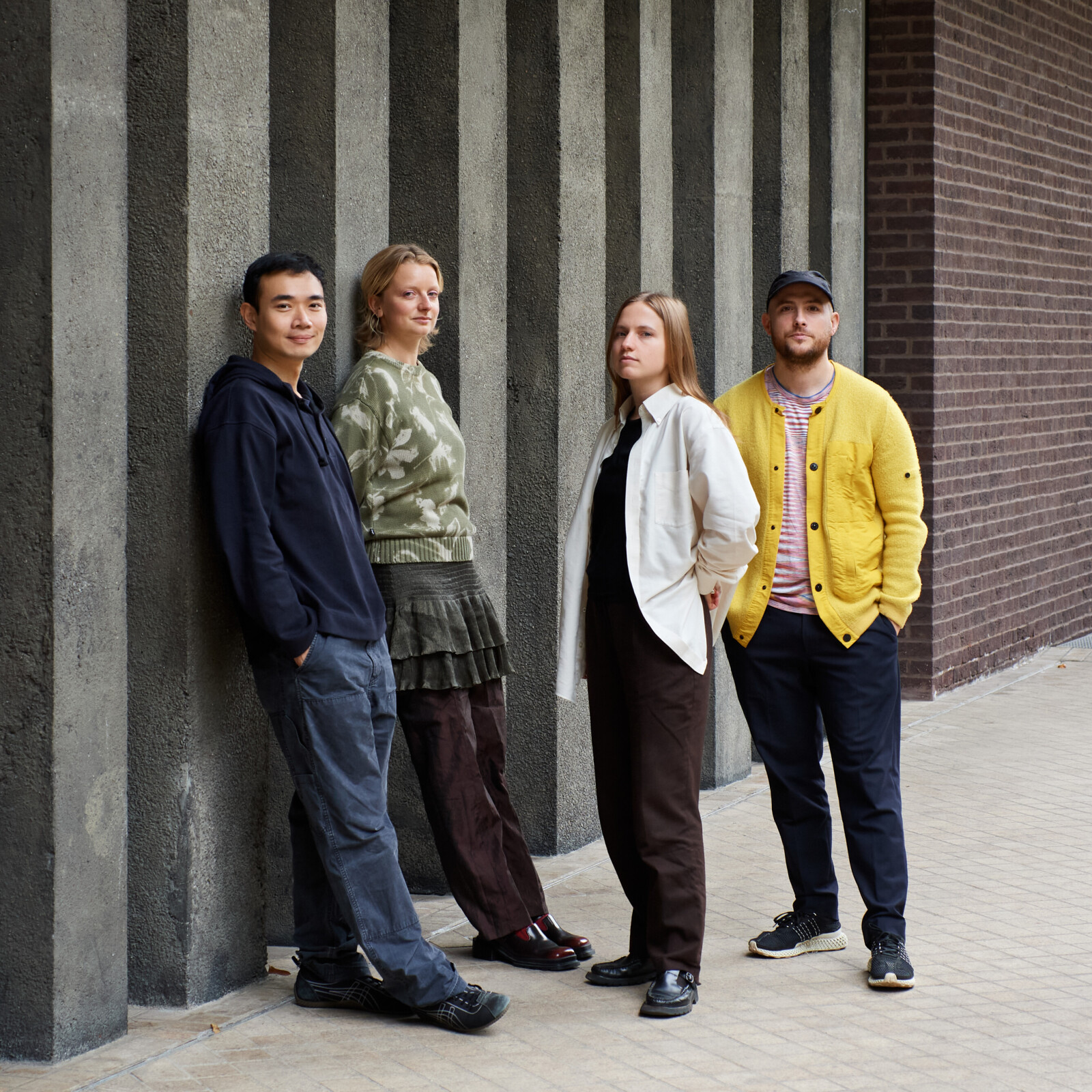Ahead of the opening of the exhibition Design Researchers in Residence: Restore at the Design Museum, we're sharing a preview of the accompanying exhibition catalogue. This conversation sees Future Observatory's curatorial director, Cher Potter, in conversation with the 2021/22 cohort of Design Researchers in Residence. They discuss their work, the tensions between processes of design and research and how they see their roles in the context of the climate crisis.
CP
I’ve often thought that design research borrows from lots of disciplines. It includes design-led research and design theory, but then you have design history as well as critical theory in relation to design. They all come at design research in very different ways. Samuel, in your research into how algae can remove harmful pollutants from freshwater bodies, you describe that you find it helpful to go to experts with some kind of design prompt. That way, you get more productive responses or answers from them. How would you define design research?
SI
When I think of design research, I think of it in relation to academic research. For me the difference is: academic research is problem solving through analysis, while design research is problem solving through synthesis.
TA
Haven’t you got a problem with problems? I have a problem with problems. I don’t think design is set up to solve problems, I think it’s all about synthesis.
SI
I understand what you mean, it can be naïve to think that you can ever solve something. Maybe it’s addressing issues rather than solving problems. It’s like throwing things at a dartboard and seeing what sticks. You produce some design objects or ideas and that’s your way of making a pathway through a subject, rather than head down analysing until you get somewhere. I try to emphasise that this is another way of working and researching.
CP
Thomas, would you say that design research as an act of synthesis operates in your work?
TA
Absolutely. I suppose I’m still trying to figure out if it’s research by design, or design by research.
CP
And it probably oscillates between the two.
TA
In my case, I see critical observation as the catalyst for design, which might mean you don’t always have to design something. That’s really quite important because it’s about knowing what your mandate is for design. And that comes from being embedded in the research, from being committed to the synthesis.
For me, it’s about fieldwork, it’s about working in the field. And that’s something that isn’t necessarily always the case with architecture – in architecture, the field isn’t really conceived in that way.
CP
It’s more about the site, isn’t it?
TA
Yes exactly. So actually, if you think about the field as opposed to the site, you might start to think about the connections and the constellations between things and this seems like a really rich territory.

CP
Sanne, were you inspired by the field, by hairdressers and the work that they were doing in collecting waste material? Or were you fascinated first by the material, and that led you into the field?
SV
The material is where I started the fascination, but quickly it opened my view to the wider system around one element. This started when I was doing my master’s degree in 2016. I was in a similar process of collecting hair. The interaction with hairdressers was similar to my current research process, but there was a pressure to create an outcome for the degree; to deliver something new, a solution. There is an idea from Keller Easterling that ‘solutions are mistakes and ideologies are unreliable markers’.[1] She speaks about encouraging entanglement whereby media and design do not try to eliminate problems, but rather put ideas and problems together in productive combinations. That’s very much what you’re saying about these different elements, Thomas. Design research is linking the in-between, the grey areas.
CP
You point towards a tension with design research – that there’s often an expectation for a tangible output at the end of the process. This is true even in this context. You have embarked on a deep research process and now you have an exhibition and you’ve got to put ‘things on tables’, so to speak. There’s a kind of tension that arises with that; it stops your research, or curbs the research process.
TA
That’s why I’m not necessarily designing an architectural intervention. Instead, I’m designing an artefact, a narrative or a film. I see those still as design, but maybe not necessarily within the guise more typical of an architect. These hopefully will be compositional and they will suggest ways of intervening that can be taken up further.
CP
Yes, so in effect these things are the research process.
TA
Absolutely, the research is the process of making. To me, what it means to be a design researcher is to occupy a space of hybridity. It isn’t it about applied knowledge or applied thinking or applied design; it’s being grounded both in the making and the visual.
DFVD
Yes, in my PhD, new knowledge came out of the practice, but my PhD didn’t solve the world’s problems, it just opened up issues for discussion. I tried to show a series of consequences that might arise in the future smart home. By way of the design-based projects that were a part of my PhD, I proved that certain factors would become problems. I tested, and that’s also why applied research was important. There was, however, one external professor who suggested I reshape my PhD and finish it with a toolkit, a set of solutions. I refused. My four year investigation was not going to finish as a toolkit, sorry. I didn’t want to simplify it to ‘the ten steps to succeed in your smart home’.
TA
How do you then address the issue of an exhibition where oftentimes we have to really pare our research right back to the ten steps, five steps, or one line or one question?
DFVD
I think with all of us, what an audience will take from our exhibition is not a recipe for how to win or solve the climate emergency. There will be openings and reflections that will lead onto changes, but not in the manner of a shortcut. The exhibition should open a vision and make the audience aware of things, allow them to see possibilities through all of our propositions. I think we are producing propositions.

CP
So, you believe in problems but you don’t believe a design researcher’s job is to solve those problems. However, it can be to unpack the problems.
DFVD
I think in my case I am more of an unpacker and a problematiser. But, there are different approaches. For example, I’m currently working with innovation design engineers, where many designers actually solve problems. They identify a problem like methane gas being released by cows belching. They create a solution: a mask that captures the methane. Now it is being tested and Prince Charles may fund its production. So, they will solve a problem. But my role now is teaching and problematising.
SI
That’s an interesting issue you raise, because some ecologists and environmentalists will say we shouldn’t be trying to reduce the amount of methane that cows produce because then we’ll simply farm more cows. This is said about phosphorus pollution as well: we should not be trying to create ways of cleaning up rivers and lakes because then that gives the incentive to farmers that they can keep polluting.
CP
In this context, what is the role of the design researcher? Unlike the environmentalist, the design researcher may not understand all of the nuanced ecological implications of the methane cycle through its various stages. Is there an advantage to the design researcher being an outsider, a generalist?
SI
I think the designer becomes a specialist in their own project. He, she or they are essentially defining their own field through everything that they do. Sanne, for example, is a specialist in her specific area. Her specialism touches on other specialisms which may be considered in academia as expert fields. Design research may touch on such a broad range of other specialisms and therefore it is considered as generalist. But, you will have acquired select pieces of knowledge at high levels that only other experts in related fields will know, without knowing all that they know.
SV
Exactly, there are different experts in various fields with their lived experience, with their knowledge and with their training. As a design researcher our role is to be that hybrid person that can enter and understand these different sectors on a certain level, but who doesn’t have to become the scientist or expert.
This is where language and vocabulary become important as a way of speaking across fields. Within design research, there are no straightforward routes regarding how these collaborations work. Having conversations with anthropologists or scientists or hairdressers or composters – all of which I am having – requires a different language and a different approach to each. As design researchers, we haven’t really been taught how to navigate this. I think we are all slowly figuring out that there are so many different layers to what design research is. It’s great to design tools, but the processes in between are not straightforward.
SI
I think one of our key roles as design researchers is being a translator. I listened to a talk recently with a cross-disciplinary designer. She talked about the incommensurability of language, how words in different fields mean different things and hold different levels of importance. As a design researcher, one of the first ways that you can make an impact is by translating these different languages across fields and helping people from different fields to collaborate through that translation.
CP
Delfina, in your role as a teacher you discuss how design education doesn’t necessarily teach you the art of cross-disciplinary collaboration or the complex nature of ethics in collaboration.
DFVD
Yes, I think it is really important to consider ethics as an umbrella of what we do – precisely because design researchers reach across so many fields and topics. It is not only a matter of understanding the ethics of collaboration and how to care for the complex information that collaborators have given you. Working with communities involves another set of ethics. Aspects of bioethics are important to design researchers whose work touches on ecosystems. Recently, some of my students were designing for people with traumas – this also involves a complex ethical understanding of how to approach those with psychological trauma and particular skillsets. Many of my students are working with AI systems that they have not created – they need to understand the biases implicit in these systems and the ethical issues this raises. Ethics is fundamental to design studies.
SV
Yes, this goes back to a previous conversation we had about co-creation and ownership; about how or whether the outcomes of the research – whether that’s work I’m doing, or work I’ve inspired other people to do – belongs to the research. If you start to co-create, who is the designer and who owns the intellectual property?

CP
Thomas, your work is also based on conversations with fellow walkers who help to develop your thinking and inform your work. Have you found that you have the necessary tools to manage that collaboration?
TA
I have practised walking and talking previously in many places, and it centres around storytelling and observation. I think there are two ways of observing. There’s the critical observation and there’s the idle observation. To be an idle observer is to assume a background role that means that you can then sit back and see the world. Whereas through walking, I’m seeing the world through motion, through the eyes of this fellow walker.
CP
And do you think it is important as a design researcher to share or show this process of observation with your viewer or audience?
TA
I think if you show the research, in other words show your thinking, you engage the audience in the process of making – or unmaking. If you present a design and don’t show how you arrived at that point – what influenced you, how you took certain decisions on the way – then you present yourself as an expert, but actually you are a translator, a generalist, a curator.
SI
The world is so full of post-rationalised ideas and projects and stories, neatly tied up. It’s horrible trying to enter into the world of designing, making and creating when your own work is imperfect. People need to know more about the process of making things work.
CP
So, would you then say that design research is about being explicit and rigorous about showing your process?
TA
Yes.
SV
Yes. However, to be careful and rigorous and critical about communicating your process is challenging when there are expectations that the work be well packaged. As an example, a company might produce a regenerative textile, which is an amazing technology, and showcase the process behind it. However, that process is presented as a communications package, a neat process that masks what the design research process actually is.

CP
Which is far messier.
SV
Far messier, and not to say that it’s uncontrolled – there is a structure and a framework and chosen methods. Recently exhibitions have been showcasing this more, presenting complex processes and journeys and not only design objects on their own. But well packaged research so often seen in the media is less about the design research process and more about other topics like consumerism and selling an idea.
DFVD
I think that’s the problem of reductionism – to be too linear, to be too clear about what’s next and how it’s wrapped up seamlessly. Design research is not about the simplifying strategies borrowed from advertising and marketing.
SV
Yes, yet at the same time design research often aims to simplify complex issues and make them more accessible to a general audience – it’s a fine balance.
CP
Which leads to a last question: what is the urgency for design research as a response to climate change? An issue so complex that many people struggle to engage with it.
SV
The climate emergency is a complex issue and it should be presented as a complex issue. Design research can showcase the complexity of this, but it shouldn’t exhaust people into thinking they are not going to bother with it. It is our role as design researchers to unpack that complexity.
DFVD
I think that the design profession itself needs to be re-understood. I don’t think we can persevere with this industrialised mindset. There’s a belief that our current design skills will not lead us to the healing outcomes that we need, so we need to re-equip our disciplines with the elements required to save this planet, which are way more complex and ambitious. We have to untrain designers and retrain them for the real challenges that we face. By addressing the need for design itself to be reconsidered, I think research is an essential part of the discussion. We need to question the design discipline itself to then really pursue the design research prospect. But we cannot ignore the first step, because the first step is very pressing.
TA
I agree, but I also think the reason why design research is relevant to the climate emergency is because by its nature it is propositional.
CP
And by ‘propositional’ you mean…?
TA
I think it is taking the research and these relational connections further. To be propositional is to visualise and represent an intervention. This might unsettle our sense of what we know and challenge established narratives, but we need new ideas to suggest alternative futures.
SI
If I was going to be super reductive, I’d say we are now aware that there are urgent issues that need to be addressed, and design is good at proposing new narratives and new ways of addressing issues. We are doing that through a synthesis of new and existing ideas.
Design Researchers in Residence: Restore opens at the Design Museum on 24 June and runs until 25 September. Entry is free and no booking is required.




